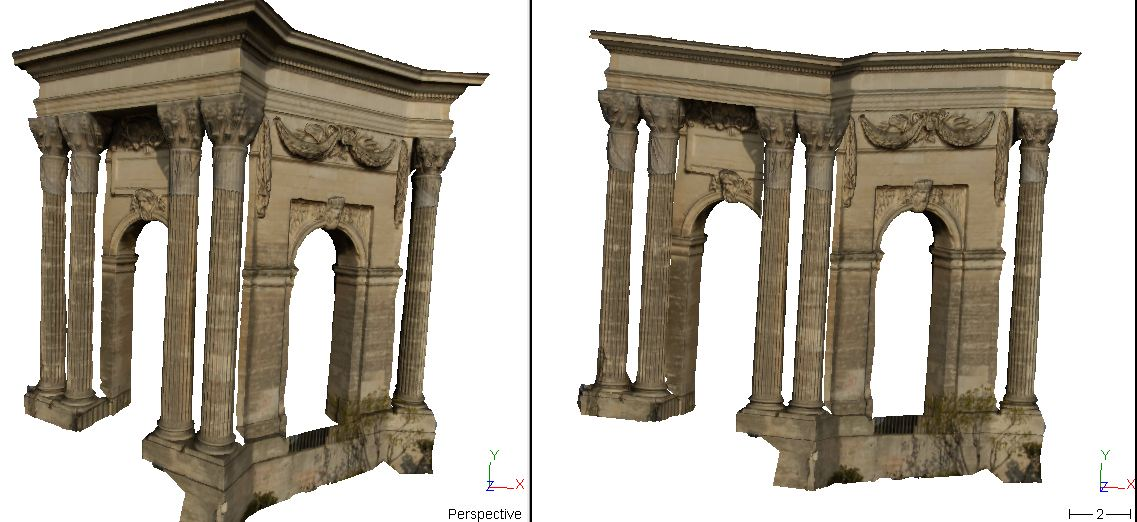Perspective and orthographic view
Two types of views are possible: Orthographic and Perspective.
You can identify if the view is orthographic or perspective by looking at the bottom right corner of the graphic zone (3). An example of view split into 2 scenes is shown in the image below. The left image is in perspective whereas the right image is in orthographic.
The scale is only drawn in orthographic as the pixel distance is the same for every depth and area on the screen in this mode. In perspective, this is not true; close objects will appear big and far objects small.
The other important difference between Orthographic and Perspective mode is that in perspective, the camera is not defined at an infinite distance to the object but is located within the 3D environment. With this rendering, it is therefore possible to enter inside a tunnel or any closed object.
The last difference between perspective and orthographic rendering is the "pan" functionality, e.g. when you simultaneously click on the left and right buttons of the mouse and move it.
In orthographic mode, this will "translate" the scene, whereas in perspective, this will rotate the angle of view without modifying the camera position. This is just like if you were moving your head to look at a different point while standing still.
